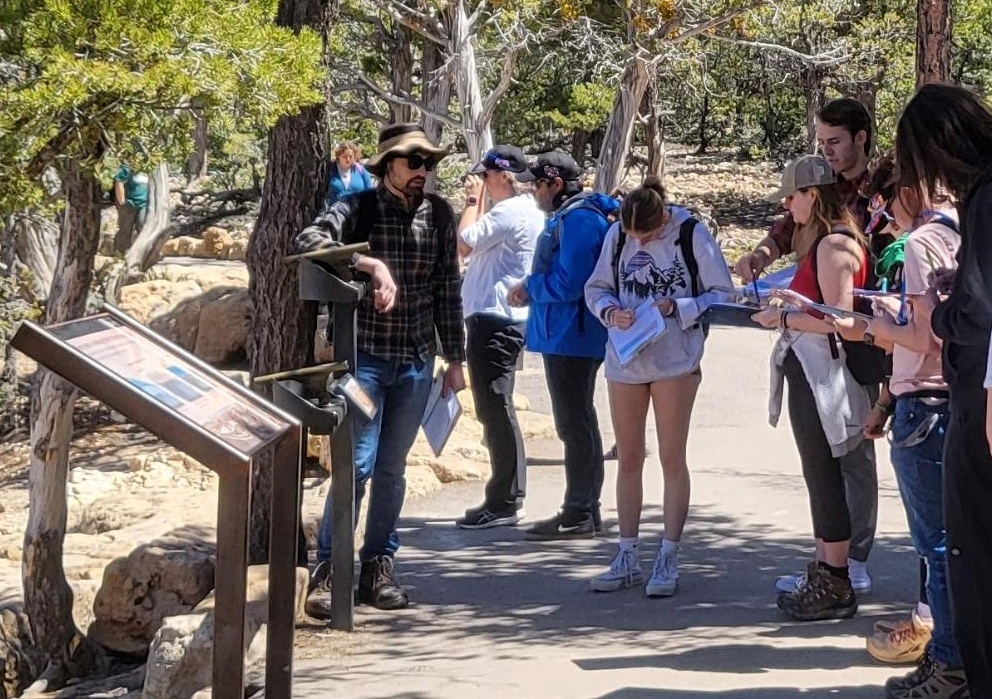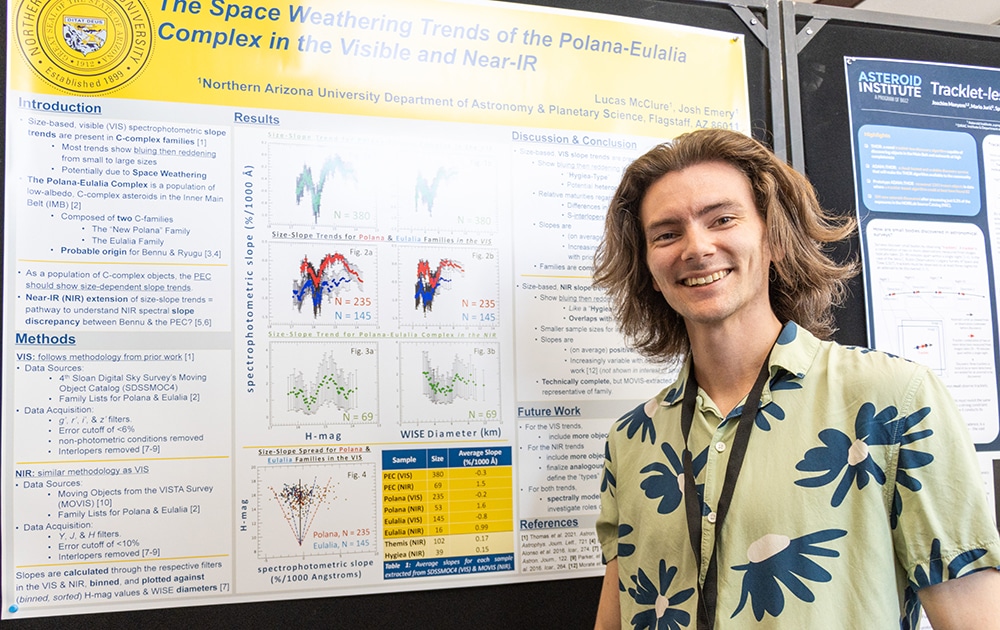Two planetary science doctoral students were among a small number of students nationwide selected for competitive independent graduate fellowships awarded by NASA.
Second-year Ph.D. student Ian Marrs and third-year Ph.D. student Lucas McClure received Future Investigators in NASA Earth and Space Science and Technology (FINESST) awards, which provide funding for research projects designed and performed by graduate students. The projects must contribute to NASA’s science, technology and exploration goals.

Hot chaos? Exploring two sides of Mars’ story
The Perseverance rover is exploring Jezero Crater and the three types of minerals—olivines, serpentines and carbonates—that make up rocks on the surface of the Red Planet. But how exactly those rocks formed remains a mystery.
Scientists generally agree that ancient Jezero contained a lake; the debate centers on whether the carbonates formed directly from the other minerals or if they formed during the evaporation of that lake. These two options offer two conflicting pictures of ancient Jezero: a hot, chaotic environment that forms primary carbonates or a cold, dry environment that forms secondary carbonates.
Marrs, who also received a Graduate Research Fellowship from the NSF, hypothesizes that the rocks in the crater will have trace elements that point to their origin story; those elements can be tracked through a process called serpentinization. He has collected a variety of rocks from the mountains of California, which offer the best analog for Martian rocks in the area, and will analyze their chemistry using the same techniques available to the Perseverance rover, then compare results to the rover’s data.
And that’s not all.
“Perhaps the most exciting aspect of this work is that the mineralogical processes that we are studying are known to generate heat and also biologically relevant compounds such as methane,” he said. “This means that we may be investigating processes that could have fueled ancient microbial life on Earth, and potentially on Mars as well.”
Associate professor Mark Salvatore, Marrs’ mentor, echoed the excitement around this research.
“Serpentinization is thought to be a widespread process in the martian subsurface and one that could be potentially important for fueling biological activity, should it have ever been present on Mars,” Salvatore said. “Ian’s work will be critical in helping to develop ways to better identify and study habitable environments and processes using Mars-relevant techniques on Mars-relevant samples.”
Uncovering the secrets of escaped asteroids

McClure’s research focuses on small bodies like asteroids and comets—essentially, these are materials leftover from the formation of planets. At NAU, he studied a population of asteroids called the Polana-Eulalia Complex (PEC), which is composed of two overlapping asteroid families that are part of the asteroid belt between Jupiter and Mars. These carbon-rich asteroids often “escape” out of the asteroid belt and into Earth-crossing orbits.
Of course, they’re not the only near-Earth asteroids; another one, Bennu, has been the subject of significant research among scientists. McClure is interested in how the PEC asteroids are different from Bennu; specifically, he’s studying how an asteroid’s size affects the light that it emits—also known as the visible spectral scope.
“This finding has turned out to be the start of many, many more questions and projects—enough for a dissertation, one could say!” McClure said. With the FINESST award, he will build on this research, including expanding his sample size to further test his early findings.
McClure, who discovered his interest in astronomy while in high school, came to NAU via the University of Tennessee, where he met his mentor, professor Josh Emery. When Emery moved to NAU, McClure first came for a Research Experience for Undergraduates program, working with associate professor Cristina Thomas, and then came to NAU, his first-choice school, for a Ph.D. McClure contacted Emery about research opportunities as soon as he was accepted—well before starting as a student.
“Lucas is an excellent student and researcher, and he spent a lot of good, focused effort writing and revising his FINESST proposal to convey to the reviewers the excitement and scientific importance of his research,” Emery said. “A lot of excellent proposals are submitted, and we are grateful for the award.”



